I'm a father of three from Sydney, a Product Director and a Product Coach. I write about product management and run the Product Manager community.
Subscribe to receive digest emails (1 per month).
Info
Posts with Personal tag.
-
Yes, It's hard to hear criticism.
When someone points out your flaws, your gut reaction is 'WTF?!' - or in business terms, 'defensiveness.'
Of course, you want to protect your ego. You want to explain yourself, prove them wrong, or even tell them to f* off. Tempting, isn't it?
But defensiveness kills growth. Pause. Breathe. Ask yourself: 'What can I learn from this - even though I hate it?' Growth starts the moment you listen instead of emotionally react.
Nothing to learn from it? That's also ok but still thank the person who gave you feedback. -
I don't like running in the morning. Or rather, I don't like the idea of it. What I really want is to have breakfast first, drink my coffee and then, a couple of hours later, think about exercise. But once the run is done, it feels great - like I've earned that big breakfast.
This morning, I went for an easy, scenic 10km run. My legs were still sore from Thursday's hill session, so I didn't (and honestly couldn't) push too hard.
Overall, I'm pretty happy with my progress (112km) in January. I've built up mileage quickly, especially considering I was struggling to run 3km at the end of December.
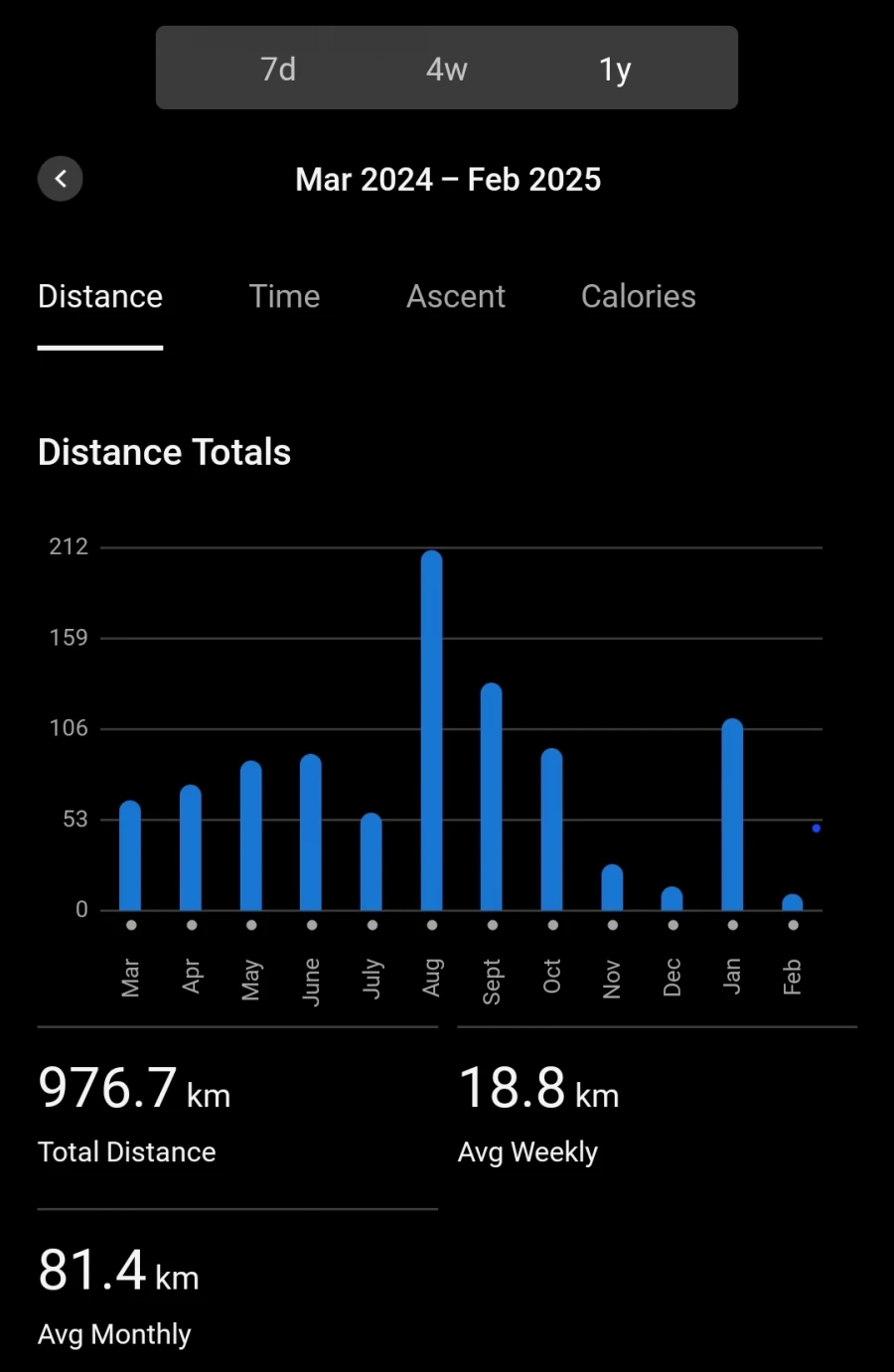
And I snapped a few pics of beautiful Sydney along the way.

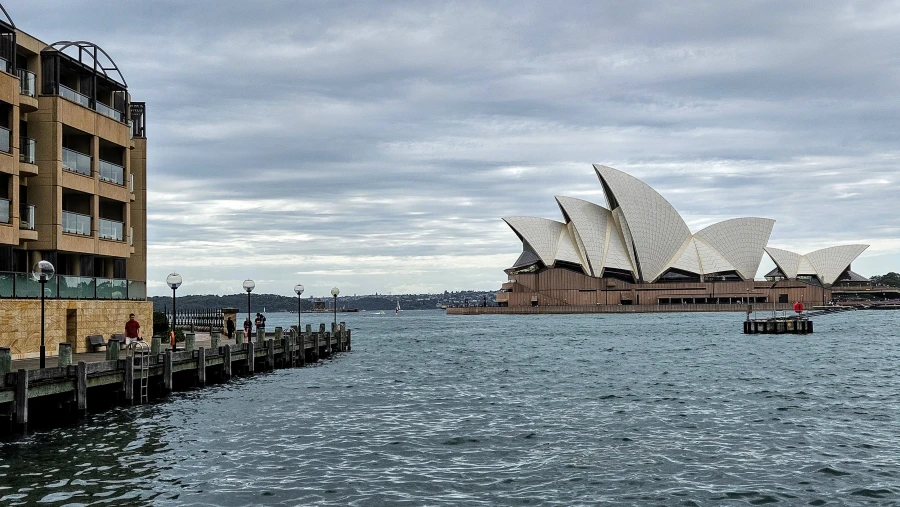

-
It's Thursday, which means hill running day. I can feel the gradual improvement compared to my last two hill runs - I'm feeling much stronger. It's still tough, but I'm covering more distance and tackling more elevation.
Today I did 12km, 437m elevation. The first 9km, I didn't switch to walking - I ran all the hills, which is a huge improvement! Looking forward to an easy run on the flats this weekend though!
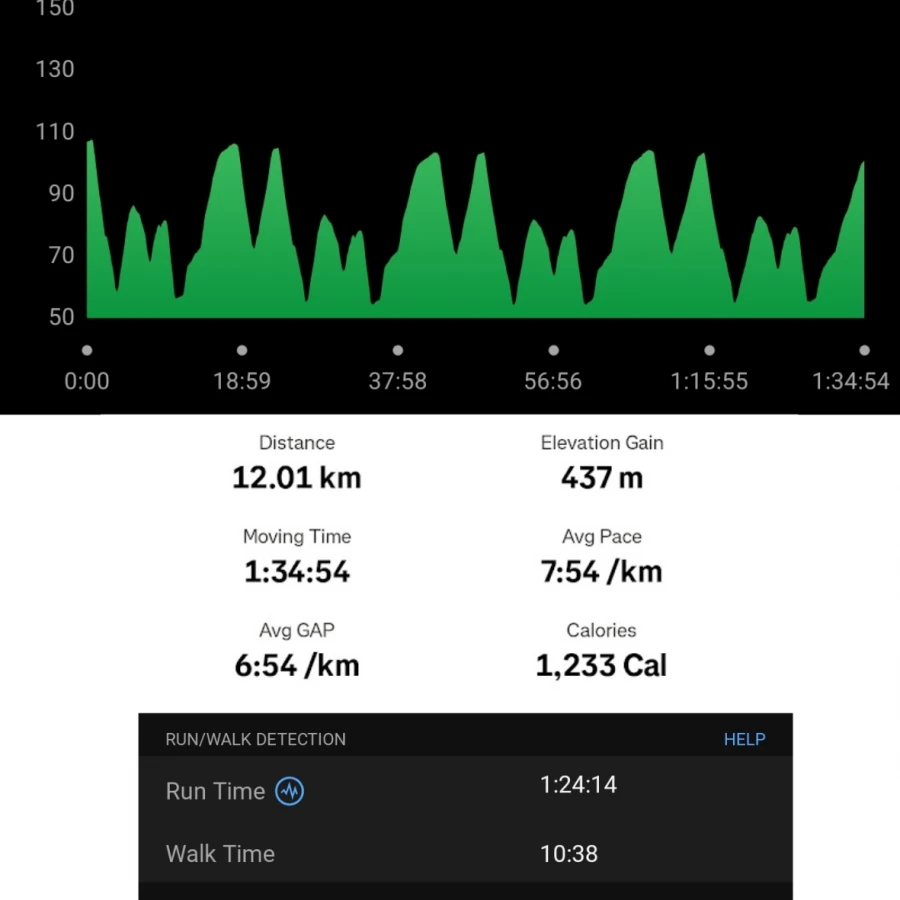
-
A quick training session tonight: SkiErg, rowing machine, plus some shoulders and arms work.
Went all out on the SkiErg 500m, then rowed 500m too. Hit a PB on the SkiErg at 1:42.7!
Strangely enough, I'm actually looking forward to the hills session tomorrow!

-
Getting used to running hills is definitely going to take some time. Feeling good about building up to running them without needing to switch to walking.
On Thursday, I had a decent go at the hills in my local area. Did 9km in 1h 8m with 307m of elevation. I ran more this time compared to the week before, cutting my walking time down to 7m 24s. Last week, for the same distance, my walking time was 19m 50s, so that's already solid progress.

Yesterday, I tackled the Bondi Beach to Coogee Beach run and back - on tired legs. There are plenty of hills and steps along that route, adding up to 283m of elevation. It was just over 14km in total. I managed to run all the way to Coogee but walked the hills on the way back. Calves were sore. Legs felt a bit heavy, which makes sense as I'm ramping up both mileage and intensity.
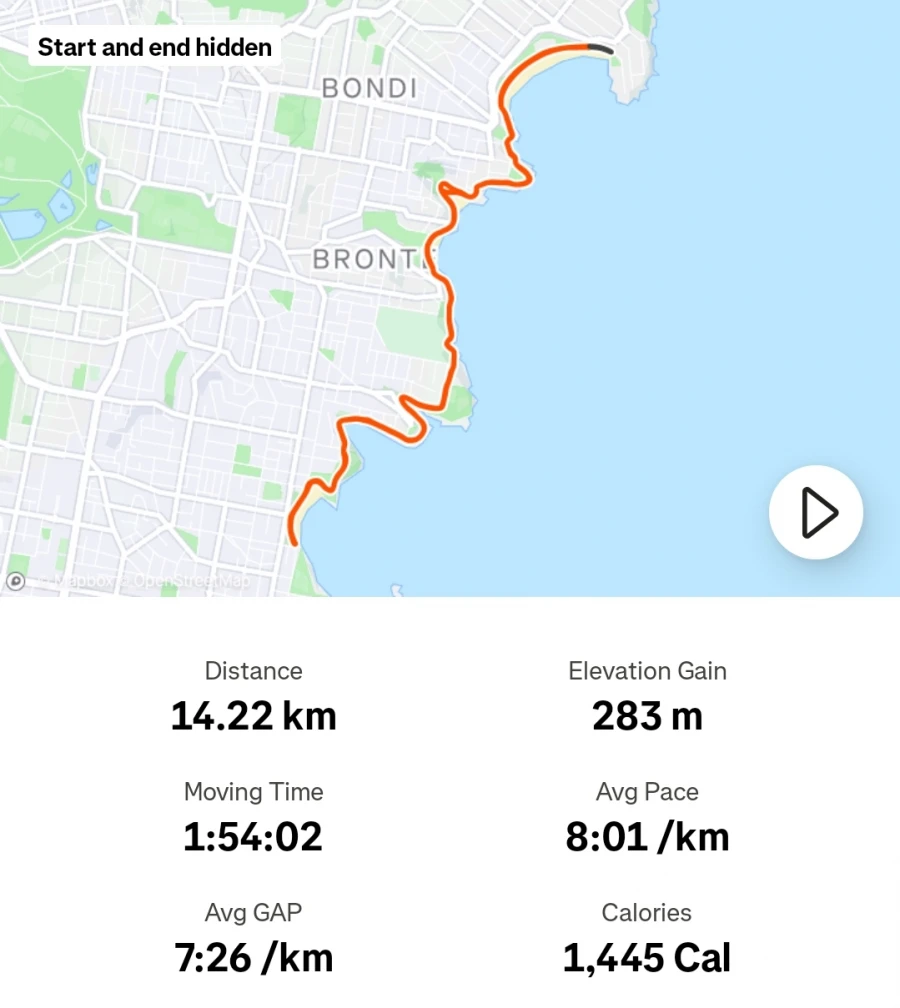
Overall, I'm pretty happy with the progress, but there's still plenty of hard work ahead before UTA50.
110 days to go!
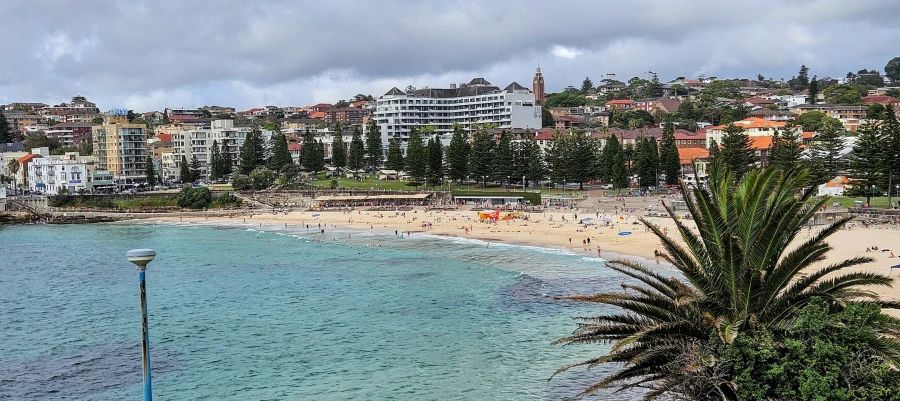
-
Struggling to write? Shrink the task.
Blog post too much? Write a tweet.
Tweet too hard? Write a sentence.
Sentence still suck? Write a shit one.
Start small. Start ugly. Start anyway.
The point isn't brilliance. It's movement. You don't find your voice by thinking. You find it by writing. Quantity leads to clarity. Bad drafts build muscle.
Write badly. Then write better. -
It's Tuesday - sprint day, yay! I mixed things up a bit this time and here's how it went:
- 2km warm-up
- 400m x 3
- 200m x 3
- 100m x 3
I hit a PB for the 200m (39.5s @ 3:18 pace) but couldn't quite beat my PBs for the 400m or 100m, even though it felt like I was flying!
The 400m x 3 was brutal. It's basically an all-out sprint the whole way.
Next Tuesday, I'm thinking of switching things up again and focusing on training for a 5km PB. The plan:- 2km warm-up
- 1km @ 5:00 pace x 6, with 2 min rest in between
Let's see how it goes!

-
Sometimes I walk past the Sydney General Post Office - it's a cool spot right in the centre of Sydney.
Underneath it, there's this whole network of tunnels and basements (not sure if the public has access to it). Back in the day, they were used for postal operations and deliveries.
These days, though, it's now there: the Fullerton Hotel Sydney, shops and restaurants.
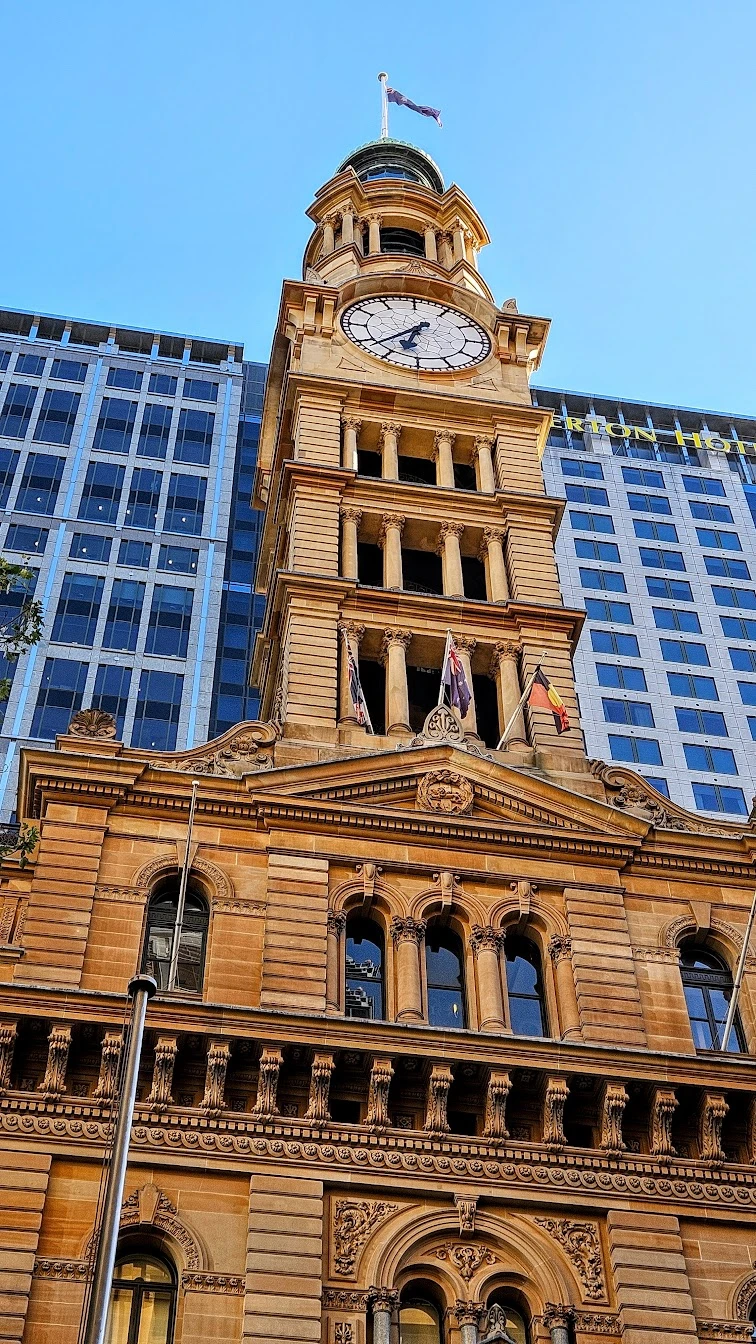
-
Caught the UFC at on of the pubs in Manly. I was supporting the Russian fighters, Umar and Islam. Absolute machines. They're incredible athletes, sharp and relentless.
Watching with my mate, we couldn't get over how insanely well they understand movement - both their own and their opponent's. Every single move is calculated and lethal.
Me in the cage? I wouldn't last 10 seconds.

-
One of my posts on LinkedIn went viral'ish. It wasn't exactly groundbreaking or full of deep insights.
But it's certainly a topic that has two completely opposite camps and no one in between.
I've written better and more helpful content (at least in my opinion), but LinkedIn's algorithm doesn't promote it because it doesn't drive engagement.
That's why I don't like algorithms. Instead of promoting good content, they push controversial or clickbaity posts that spark engagement.
Thoughtful and insightful content stays invisible.

-
I took a leg rest day yesterday and today I felt so much better. My legs were much fresher than they were on Tuesday and felt pretty good, especially considering it was hills training today.
Ran 9km with a total of 300m elevation. I couldn't run all the hills and had to walk about half of them, but I'll keep pushing!
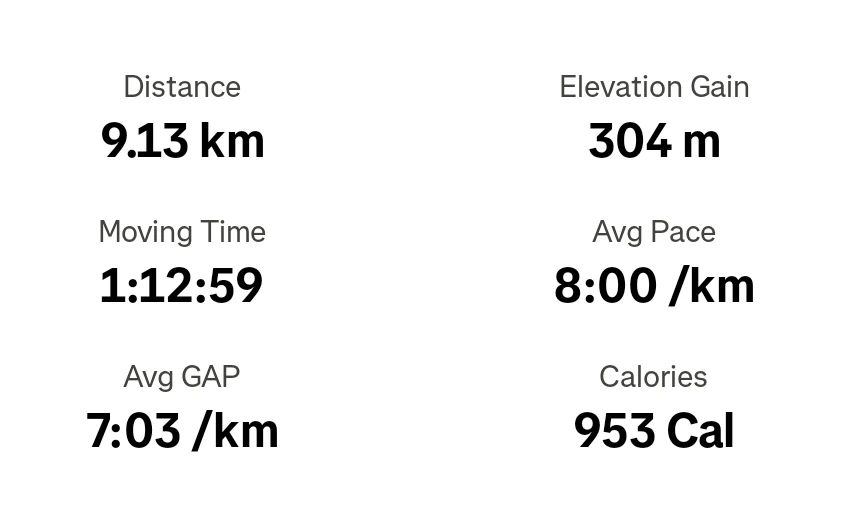
-
When I'm trying to solve a problem and my brain starts running around in circles like a headless chicken, I like to smash the "I'm going to bed to let it marinate" button.
At that point, there's no way to push my stubborn brain to explore other ideas. The brain is tired and moody.
Stepping away is progress because you trust your brain to do its thing while you sleep. Don't do this during the day, though; your colleagues won't appreciate it.
I know when I wake up, I'll have a dozen (okay, maybe a couple) fresh angles and new ways to tackle the problem. Magic! -
Tough run today. I planned for 7km plus sprints but ended up with just 5km. Everything was sore - feet, calves, hammies, glutes. My energy was low too. It was hot. It was a slog. It wasn't pretty.
But that's alright. The main thing is showing up and doing the best I can on the day.
I'll give my legs a rest tomorrow, then on Thursday, I'll do some easy hill running/walking. I won't push it too hard - just easing into the hills.
123 days until UTA50 in the Blue Mountains.

-
Leg day this morning:
- Started with a 1km easy run to warm up
- The leg extensions and leg curls on the machines.
- Lunges, with 2x12kg kettlebells, 40mx2
- Burpee broad jumps, 60m
- Wall balls, 10kg x 30
Slowly building strength back. 💪
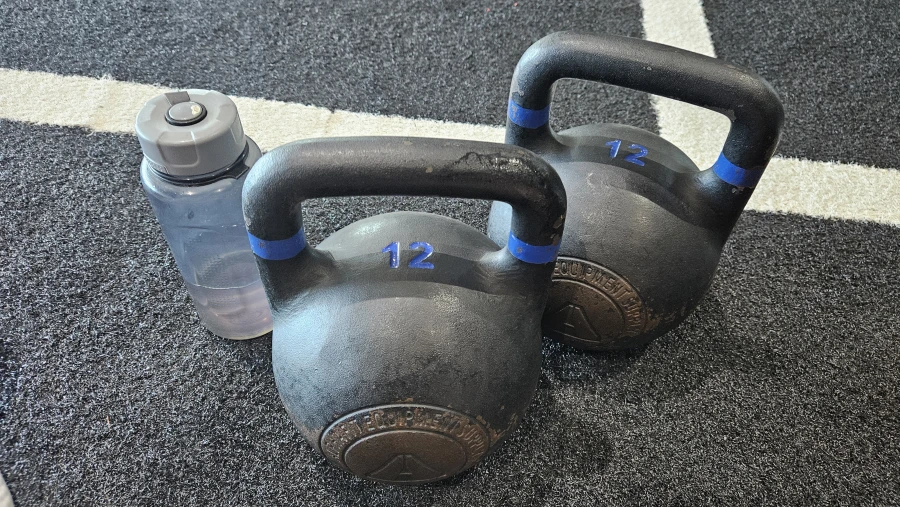
-
A short, hilly run near Avalon Beach. Hot, tough but absolutely beautiful.
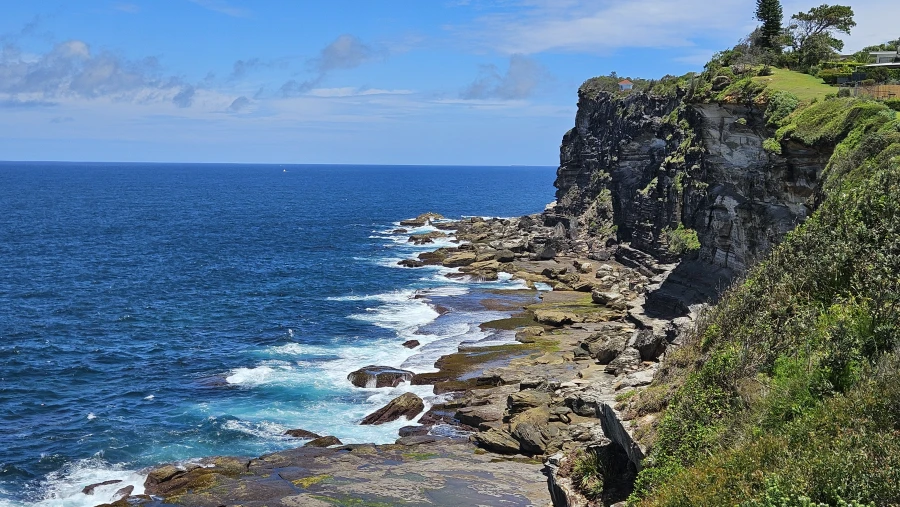

-
I'm going to miss out on the Sydney Marathon in August as I didn't get an invite 😭. I'll have to find an alternative place to run a marathon. It's a pretty cool experience and wanted to do it again.
Anyway, I just came back from another run. I did the same routine as on Tuesday (6km easy run plus sprints) and somehow got PBs in 400m (1m 19s) and 100m (17.6s). I didn't expect that at all as my legs felt a bit heavy. But here we go. Making progress. Really enjoying the sprints at the moment.

-
Did another body scan, the first since July, just before Hyrox.
As expected, I gained a bit of fat during my trip to Japan. The percentage was probably higher right after the trip but I've likely dropped some in the last few weeks of training.
My goal is to get under 15%. It's been almost a week without snacks or sugar. I stick to breakfast, lunch and dinner. The only thing I allow myself to eat in between is carrots 🥕
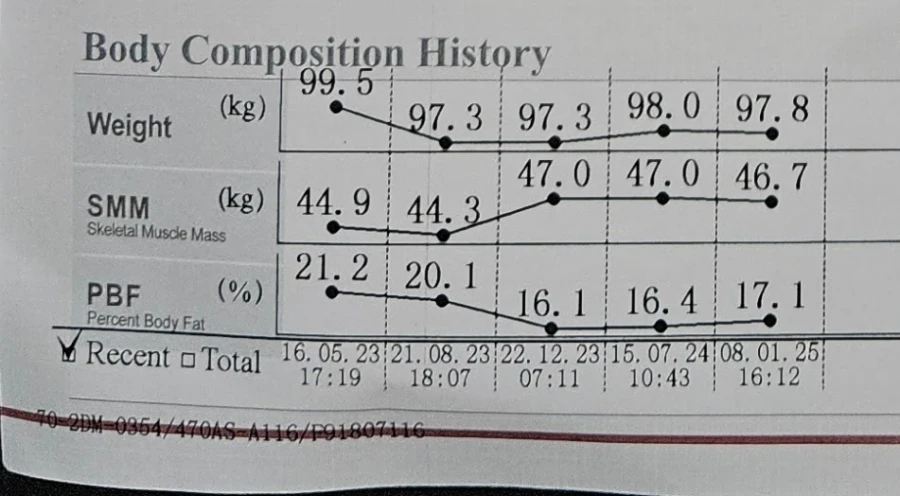
-
I created another illustration. This time, it's the famous Vienn Diagram!
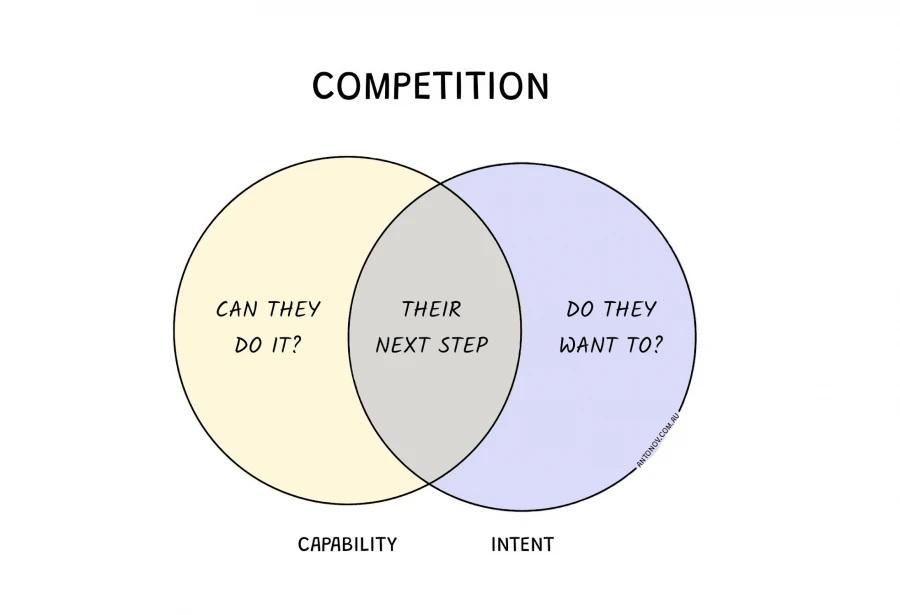
-
The journey to UTA50 has just begun! I'm gradually building mileage, adding sprints at the end of sessions and getting used to running on tired legs.
Tonight's run was an easy 6km at a 6:25 pace, followed by sprints:
400m x 1
200m x 2
100m x 4
I'll keep track of my progress as I work on improving my speed.
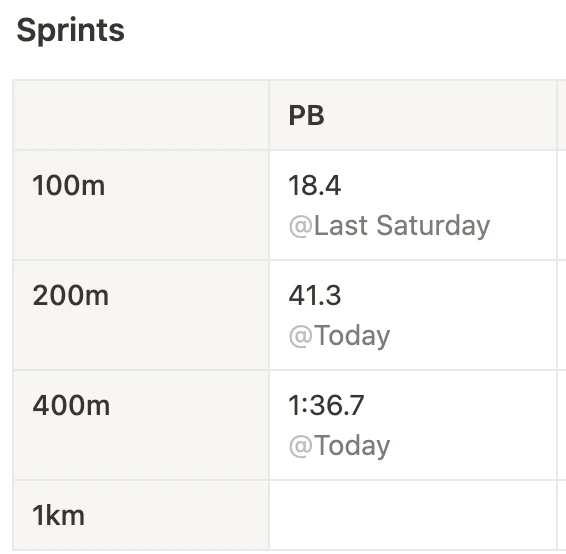
-
It's not working harder. It's stepping back.
The answer isn't hidden. It's waiting for a moment of space, when the mind quietly connects what was already there. That's the brilliance of stepping away.
When it clicks, everything changes.
One realisation I had was that I want to create and share a “manual of me.” Something to help others understand how I work and how best to collaborate with me. So, I went ahead and drafted the first version.
The other realisation was about how our product teams operate in the context of our market. We can move faster. We should move faster. And we will.
Big day!
Feel free to reach out: [email protected].
